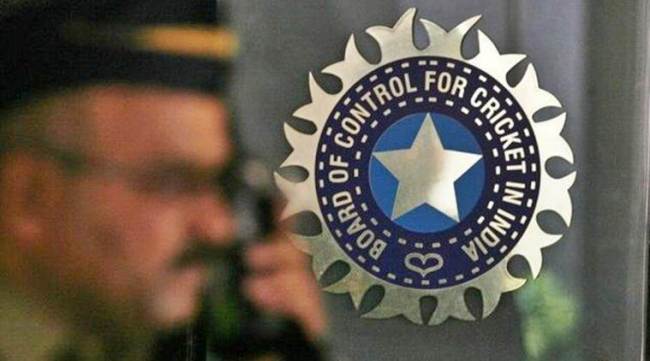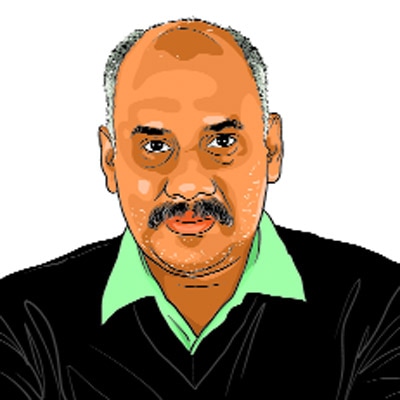Opinion Conflict of interest controversy is not about individuals, but about rules that must account for rule-benders
While aspiring to put in place a set of principles that are over-arching, if the constitution is a shade idealistic, so be it. There are lessons to be learnt from the past.
 (Representational Image)
(Representational Image)  The Committee of Administrators (CoA), assigned by the Supreme Court to dismantle the old cricket edifice, has unknowingly promoted this system by being soft towards the omnipresent legends enacting multiple roles.
The Committee of Administrators (CoA), assigned by the Supreme Court to dismantle the old cricket edifice, has unknowingly promoted this system by being soft towards the omnipresent legends enacting multiple roles.
If you think there is conflict of interest, there probably is. Indian cricket these days is dealing with this brutal, but undeniable, truth.
Sourav Ganguly has been told that he can’t sit in the Delhi Capitals dugout and also be in charge at Eden Gardens. Sachin Tendulkar and V V S Laxman, because of their IPL connections, can no longer be on the all-powerful committee that picked Ravi Shastri as coach. Rahul Dravid can’t be the vice-president at India Cements — the company that owns Chennai Super Kings — and also be the man in charge at the BCCI’s National Cricket Academy.
The downgrade hasn’t gone down well with the game’s superstars. As always it was Ganguly, the voice of the Golden Generation, who took the lead in expressing the collective disgust of those with more pies on their table than their fingers could fit into. “New fashion in indian cricket… conflict of interest… Best way to remain in news. god help indian cricket …,” he tweeted.
Ganguly’s immediate provocation was the BCCI ethics officer’s notice to Dravid but his own angst of choosing just one of the four influential positions he then occupied — Cricket Association of Bengal president, BCCI’s cricket committee member, Delhi Capitals advisor and television pundit — also seemed to have triggered this apocalyptic outburst. Ganguly’s “new fashion in Indian cricket” has been a corporate norm for ages now. While the world was swearing their exclusivity to their employers by signing thick water-tight contracts, on the island that houses cricket’s cozy club, “conflict of interest” was still an alien concept. Inside that bubble lived a close-knit community, and it was fashionable to wear more than one hat.
The Committee of Administrators (CoA), assigned by the Supreme Court to dismantle the old cricket edifice, has unknowingly promoted this system by being soft towards the omnipresent legends enacting multiple roles. A couple of years ago, historian Ramachandra Guha, in his resignation letter from the CoA, had, while describing this as cricket’s “superstar culture”, written: “The more famous the player (former or present) the more leeway he is allowed in violating norms and procedures… One famous former cricketer is contracted by media houses to comment on active players while serving as President of his State Association.”
Guha’s red flag was ignored, the CoA didn’t find anything wrong in Ganguly signing a MoU with the Kolkata Knight Riders as Cricket Bengal president for hosting their home games at Eden Gardens and later getting into a contract with Delhi Capitals as their advisor. In his own backyard, Eden Gardens, the Prince of Kolkata would sit in the away dressing room. The picture of him assessing the Eden pitch wearing a Delhi jersey summed up Indian cricket’s conflicted hierarchy.
Ganguly continued to push the envelope. During the IPL, he would be seen giving a bear hug to his team’s star player, the young wicket-keeper batsman Rishabh Pant and within days, as a World Cup commentator, questioned M S Dhoni’s place in the team. Maybe, it was what Virat Kohli’s India desperately needed and a fair call, but Ganguly, after his seamless switch from the Delhi Capitals jersey to the sharp suit of a pundit, didn’t sound convincing. He might be the man solely responsible for sweeping regionalism out of the Indian cricket when he was the captain, but as a committed cricket administrator, and an impartial commentator, he had failed.
Casting aspersions on the country’s superstars has never been popular. Their glorious cricketing deeds and unblemished life in public have given them a well-deserved squeaky clean image. So, to even think that Dravid would be biased towards the players of CSK, the IPL franchise owned by his employers, India Cements, would amount to blasphemy. That’s where the players and fans misunderstand the concept of conflict of interest.
BCCI’s ethics officer, former SC Judge D K Jain, in a detailed order that restricts Ganguly to just one BCCI post, has a line that should be read out repeatedly to those who get pained when reminded of the possibility of them availing personal benefits because of their official position.
“Generally speaking, the concept of Conflict of Interest is not necessarily a question about something one does or intends to do but a question of what one could do,” Jain writes. It’s not about judging an individual, it is about understanding the scope of his power. So, maybe, Ganguly wouldn’t influence the curator at Eden or Dravid would never even think of pushing CSK players but in the days to come, someone in these powerful positions can.
Institutions aren’t governed by rules meant for a handful of conscientious individuals, they need to factor in the worst rule-benders. While aspiring to put in place a set of principles that are over-arching, if the constitution is a shade idealistic, so be it. There are lessons to be learnt from the past.
Siding with the players, the CoA has often lamented about the serious dearth of players with stature while explaining why the same set of cricketers end up being on important committees, commentary panels or even in IPL dug outs. It’s a flawed idea since this has resulted in the concentration of power in a few hands, which is at the core of Indian cricket’s biggest crisis for the last three years.
When Lalit Modi went selling the IPL franchise more than a decade back, there were few takers of this untested format. Modi would rope in family and friends. The BCCI would strike out the “conflict of interest” clause from the constitution, allowing N Srinivasan to have commercial interests in cricket by way of pocketing an IPL team. Again, power rested in a few important hands. This inadvertently laid the foundation of the Indian Parivar League, where there was always an uncle, a father or a father-in-law that could be trusted to bail one out if caught pulling a fast one.
Based on the findings by Justice R M Lodha, the SC called the amendment of the “conflict of interest” clause, the true villain of the piece. That’s why Lodha wanted an extensive background check for those wanting to be under the BCCI umbrella. The recent cases of cricket corruption in franchise T20 leagues have shown that the sharks are out there waiting to sneak into the system.
So, however much the players want, the new rule book can’t have a conflict of interest clause with an asterisk at the start and a fine print below that reads: Tendulkar, Dravid, Ganguly, Laxman and all others with Test batting averages of 50 and more exempted, since we know they can do no wrong.
sandeep.dwivedi@expressindia.com
— This article first appeared in the October 4, 2019 print edition under the title ‘For a free and fair game’





